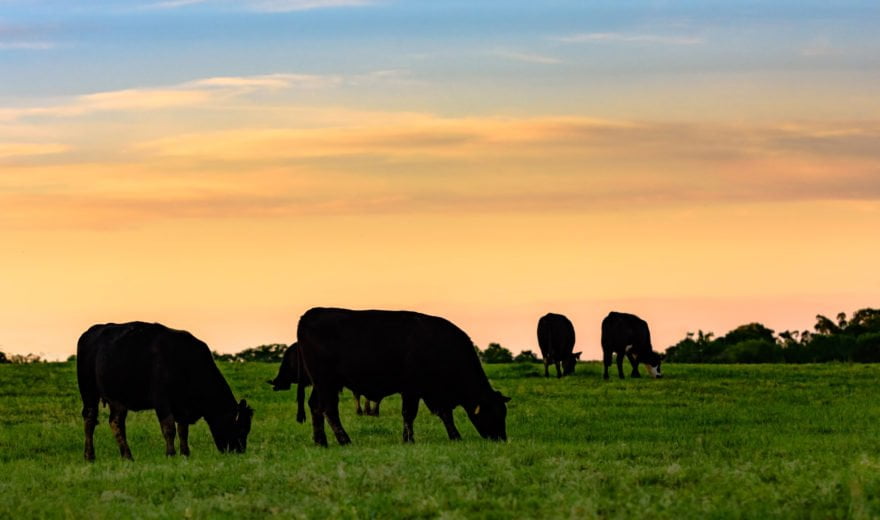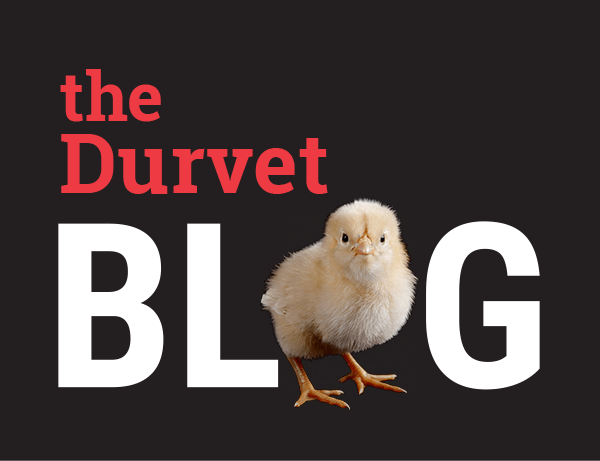
Internal parasites can wreak havoc on your herd. That’s why an effective deworming program is an essential cornerstone of your herd health plan. Strategic deworming starts with understanding the life cycle of these pesky parasites and the effects they can have on cattle.
How cattle get parasites
It's important to understand that a parasite lives two lives: one inside your cattle and one outside. Adult parasites in cattle produce eggs that are passed in the manure. The eggs hatch, producing larvae that develop and move up onto the pasture grasses where cattle consume them. Once inside a new host, the process starts over again.
Parasites also have a tremendous ability to survive on pasture. Eggs can survive the winter and hatch out with warm weather. Infection is most likely to occur when temperatures are between 60° and 80°F and when there is adequate rainfall.
Effects of parasites in cattle
The effects of internal parasites on cattle may vary in severity and are influenced by age and stress level of the animal.
Internal parasites affect the animal in three ways:
- Decreased feed intake—The largest effect that internal parasites have on beef cattle production is a limit in feed intake. Cattle with relatively low parasite burdens have a reduction in feed intake (up to 3.2 percent), while cattle with high parasite burdens consume up to 7.8 percent less feed. , A reduced amount of feed intake means that the animals are consuming less energy, protein, vitamins, and minerals, all of which play a vital role in animal growth, reproduction, and immune function.
- Decreased nutrient absorption—The specific effects of internal parasites on the vitamin and mineral status of animals are poorly understood. However, a reduction in intake decreases the supply of both vitamins and minerals to the animal. Moreover, the damage caused by parasites to the gastrointestinal tract limits the absorption of the nutrients that are consumed. Reduced nutrient intake and absorption is especially detrimental in high-stress cattle because it contributes to their inability to respond to an infectious disease challenge. However, the negative effects of internal parasites are not limited to high-stress cattle, as other classes of infected cattle may also be negatively affected by reduced nutrient availability.
- Increased nutrient requirements of the animal—Parasites affect the energy, protein, vitamin, and mineral status of the animal, thereby affecting every aspect of the biology of the animal that is relevant to production. Therefore, the animal requires an increase in nutrients and calories for maintenance of body weight, growth, and reproduction.
Cattle with severe worm burdens can show signs of diarrhea, anorexia, and lethargy. A mild-to-moderate worm burden can also cause disease and stress the immune system, making the animal more prone to other diseases.
In addition to the physical effects on the animal, the economic losses from parasite infections of cattle can be significant as well. Research shows internal parasites can cost you more than $190 per head over the lifetime of each animal in lost performance. Of course, the impact at the individual farm level varies between regions, production systems and years. Nevertheless, parasite control is one of the most economically important measures you can take to protect your herd.
Choosing the right dewormer
Effective deworming does not have to be difficult. The good news is that you have several deworming options to suit your operation’s needs.
Safe-Guard® (fenbendazole), for example, offers plenty of formulations that can be used chute side, drenches and paste, or on the pasture including blocks, pellets, free-choice-mineral and range cubes. It’s safe and proven and goes straight to the gut, killing worms where they live, ultimately preventing pasture contamination. Safe-Guard® features broad-spectrum activity and is effective against the key internal parasites of cattle. And because of its unique mode of action and resulting slow kill, it’s safe for the animal.
In the cattle business, you need more than one way to solve a problem. With Safe-Guard®, the non-handling and handling options make it ideal for all operations.
Take home message
From cow-calf operations and backgrounding programs to feedyard management practices, ensuring that animals are well-cared-for not only makes good business sense, it’s also the right thing to do.
A conversation with your veterinarian can help you plan and implement a program that provides the best parasite control over the long term. For more information, visit, http://www.safe-guardcattle.com/.
Consult your local veterinarian for assistance in the diagnosis, treatment and control of parasitism.
Safe-Guard EN-PRO-AL Molasses Block: RESIDUE WARNING: Cattle must not be slaughtered within 11 days following last treatment. A withdrawal period has not been, established for this product in pre-ruminating calves. Do not use in calves to be processed for veal.
Safe-Guard Protein Block: RESIDUE WARNING: Cattle must not be slaughtered within 16 days following last treatment. A withdrawal period has not been established for this product in pre-ruminating calves. Do not use in calves to be processed for veal.
Safe-Guard mineral, feed through products and liquid feed: RESIDUE WARNING: Cattle must not be slaughtered within 13 days following last treatment. For dairy cattle, the milk discard time is zero hours. A withdrawal period has not been established for this product in pre-ruminating calves. Do not use in calves to be processed for veal.
Copyright © 2017 Intervet Inc., d/b/a Merck Animal Health, a subsidiary of Merck & Co., Inc.
[1] Smith, R. A., K. C. Rogers, S. Husae, M. I. Wray, R. T. Brandt, J. P. Hutcheson, W. T. Nichols, R. F. Taylor, J. R. Rains, and C. T. McCauley. 2000. Pasture deworming and (or) subsequent feedlot deworming with fenbendazole. I. Effects on grazing performance, feedlot performance and carcass traits in yearling steers. Bovine Pract. 34:104–114.
[2] Taylor, R. F., D. H. Bliss, R. T. Brandt, Jr., W. T. Nichols, J. R. Rains, J. P. Hutcheson, and R. A. Smith. 2000. Pasture deworming and (or) subsequent feedlot deworming with fenbendazole. II. Effects on abomasal worm counts and abomasal pathology of yearling steers. Bovine Pract. 34:115–123.
[3] Economic analysis of pharmaceutical technologies in modern beef production, John D. Lawrence and Maro A. Ibarburu, Iowa State University, 2007.

 BACK TO MAIN BLOG
BACK TO MAIN BLOG 
Comment